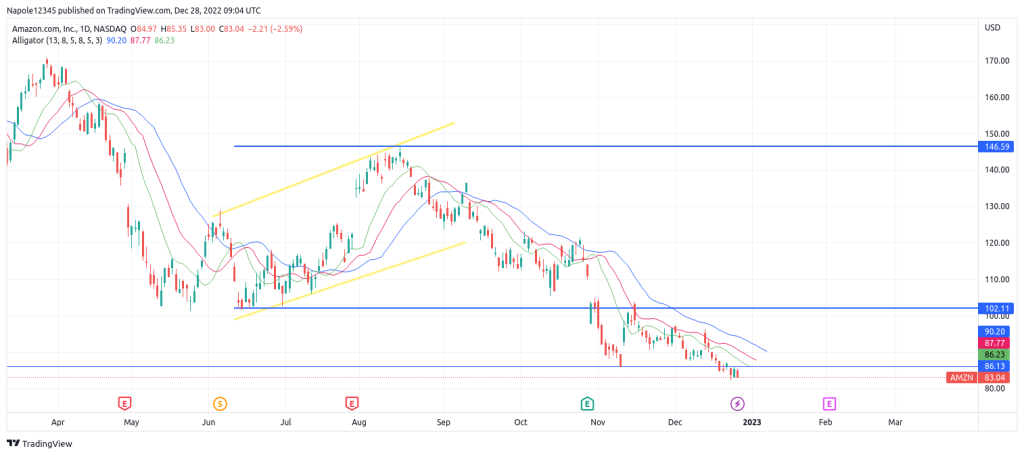- Amazon dropped by almost 3 percent during yesterday’s trading session, continuing an aggressive bearish trend
Amazon dropped by almost 3 percent during yesterday’s trading session, continuing an aggressive bearish trend that has seen its value drop by 10 percent for the past month. The year-to-date data also shows the current bearish trend has been long-term, with its value dropping by over 50 percent.
Why has Amazon performed badly in 2022?
Amazon has had a challenging year in 2022, with its stock price dropping by over 50% year to date and by 10% in the past month. There are several potential reasons for this poor performance:
One factor could be a slowdown in e-commerce growth. As the text mentions, Amazon and other e-commerce companies are facing tough year-over-year comparisons, which may be leading to slower growth in the industry. In addition, the economy has started to reopen, which could lead some consumers to return to physical stores instead of shopping online.
Another reason could be the return of consumers to physical stores. As the economy starts to reopen, it is possible that more consumers will feel comfortable shopping in person again, leading to a decrease in online sales. This could be especially true if the Covid-19 pandemic continues to subside.
Inflation and supply chain constraints could also contribute to Amazon’s poor performance. The text mentions that Amazon and other tech companies are facing pressure due to higher costs related to inflation and supply chain constraints. These factors could lead to decreased profitability and lower stock price.
The worsening economy and rising interest rates could also be impacting Amazon’s stock price. The text suggests that fears of a recession and rising interest rates are contributing to the tech sell-off, including Amazon’s stock price drop. If the economy worsens and interest rates continue to rise, it could lead to decreased consumer spending and lower profits for Amazon and other companies.
Slowing growth in Amazon’s core retail business could also be contributing to the company’s poor performance. If this trend continues, it could lead to decreased profits and a lower stock price.
Cost-cutting measures, including layoffs and a hiring freeze, could also be impacting Amazon’s stock price. The text mentions that the company’s CEO has implemented a review of the company’s expenses, leading to some programs being shuttered and a hiring freeze across the corporate workforce. In addition, the company has reportedly begun laying off thousands of employees. These measures could be a response to decreased profits and may be necessary in order to remain competitive, but they could also contribute to the company’s declining stock price.
Finally, Amazon’s projected sales for the current quarter are far below analysts’ average forecast, according to the text. If actual sales do not meet these projections, it could lead to decreased profits and a lower stock price.
Going into 2023, it is highly likely that we might continue to see the company suffering from the same factors that affected it throughout 2022. Therefore, my 2023 price forecast for the first quarter expects it to drop further, possibly into the 60s. There is a very high likelihood we might see it dropping below the $60 price level.
Daily Chart





